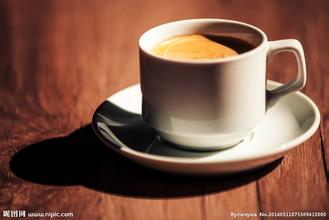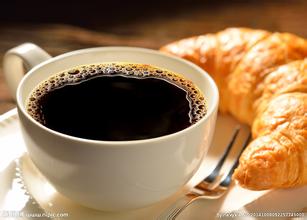Kaha Yang Gan Manor Coffee Manor in Indonesia Kopi Luwak
Arabica coffee beans grow in tropical colder high-altitude areas, and the hot and humid zone that is not suitable for Arabica coffee is where robusta coffee grows. Robusta has a unique aroma (called "Rob smell", which some people think is moldy) and bitterness, accounting for only 2% of mixed coffee. 3%, the whole cup of coffee becomes Robusta flavor. Its flavor is so bright and strong that if you want to taste it directly, you have to consider it. It is generally used in instant coffee (which extracts about twice as much liquid coffee as Arabica), bottled coffee, liquid coffee and other industrial coffee. The caffeine content is about 3.2 per cent, much higher than 1.5 per cent of Arabica, but if you add in the hybrids of Arabica and robusta-such as the variant Columbia (Variedad Colombia), which belongs to the main Colombian coffee variety, has 1/4 Robusta pedigree, and therefore resistant to leaf rust and high yield-and its mutant secondary coffee beans, the classification will be more complicated. Some Arabica coffee beans are quite close to the native species, while others are quite similar to the Robusta species. Even if the coffee has the same name (named from the place of origin), as long as the cultivated varieties are different, the flavor is different from the leaf rust-resistant varieties found in the African Congo, teaching the Arabica species to be more resistant to the disease. People like to compare the robusta species to the Arabica species of coffee. In fact, the robusta species was originally a mutant of the Congolese species (scientific name Cofffea canephora), so it is the Congolese species that should be compared with the Arabica species. However, until today, the name of the Robusta species has been commonly used by the public, and it is regarded as the same species as the Congo species. West Africa is the origin of Liberian coffee, no matter whether it is high or low temperature, humid or dry. It has a strong adaptability, but it is not resistant to leaf rust and its flavor is worse than that of Arabica, so it is traded only in some West African countries (Libya, C ô te d'Ivoire, etc.). Or planted for research.
About 65% of the coffee in circulation in the world market is Arabica.
According to the statistics of the International Coffee Organization (ICO), excluding the domestic transactions of each coffee-producing country, about 65% of the coffee in circulation in the world market is Arabica and 35% is robusta. Arabica species are characterized by slender and flat grains, while robusta coffee beans are round and can be easily distinguished by their shape.

Important Notice :
前街咖啡 FrontStreet Coffee has moved to new addredd:
FrontStreet Coffee Address: 315,Donghua East Road,GuangZhou
Tel:020 38364473
- Prev

Introduction of Ted Manor in Sidamo Coffee producing area
The coffee in Sidamo has a variety of flavors. Different soil types, microclimates and countless native coffee species, towering mountains, highlands, plateaus, valleys and plains, diverse topography, and the geology of the area belongs to nutrient-rich, well-drained volcanic soil. the depth of the soil is nearly two meters, and the surface soil is dark brown or brown. The biggest advantage of the place is
- Next

Indonesian Coffee Flavor region introduces Arabica Coffee Manor
The main coffee producing area Java, the oldest producing area, continues its reputation from the glorious era of Indonesian coffee in the 18th century. When it comes to Java coffee, it is still reminiscent of quality and delicacy. At that time, the most famous blend was Java coffee with Yemeni mocha. In addition, Java also has a very famous old coffee Aged coffee, or monsoon coffee Monsooned c
Related
- Does Rose Summer choose Blue, Green or Red? Detailed explanation of Rose Summer Coffee plots and Classification in Panamanian Jade Manor
- What is the difference between the origin, producing area, processing plant, cooperative and manor of coffee beans?
- How fine does the espresso powder fit? how to grind the espresso?
- Sca coffee roasting degree color card coffee roasting degree 8 roasting color values what do you mean?
- The practice of lattes: how to make lattes at home
- Introduction to Indonesian Fine Coffee beans-- Java Coffee producing area of Indonesian Arabica Coffee
- How much will the flavor of light and medium roasted rose summer be expressed? What baking level is rose summer suitable for?
- Introduction to the characteristics of washing, sun-drying or wet-planing coffee commonly used in Mantenin, Indonesia
- Price characteristics of Arabica Coffee Bean Starbucks introduction to Manning Coffee Bean Taste producing area Variety Manor
- What is the authentic Yega flavor? What are the flavor characteristics of the really excellent Yejasuffi coffee beans?

